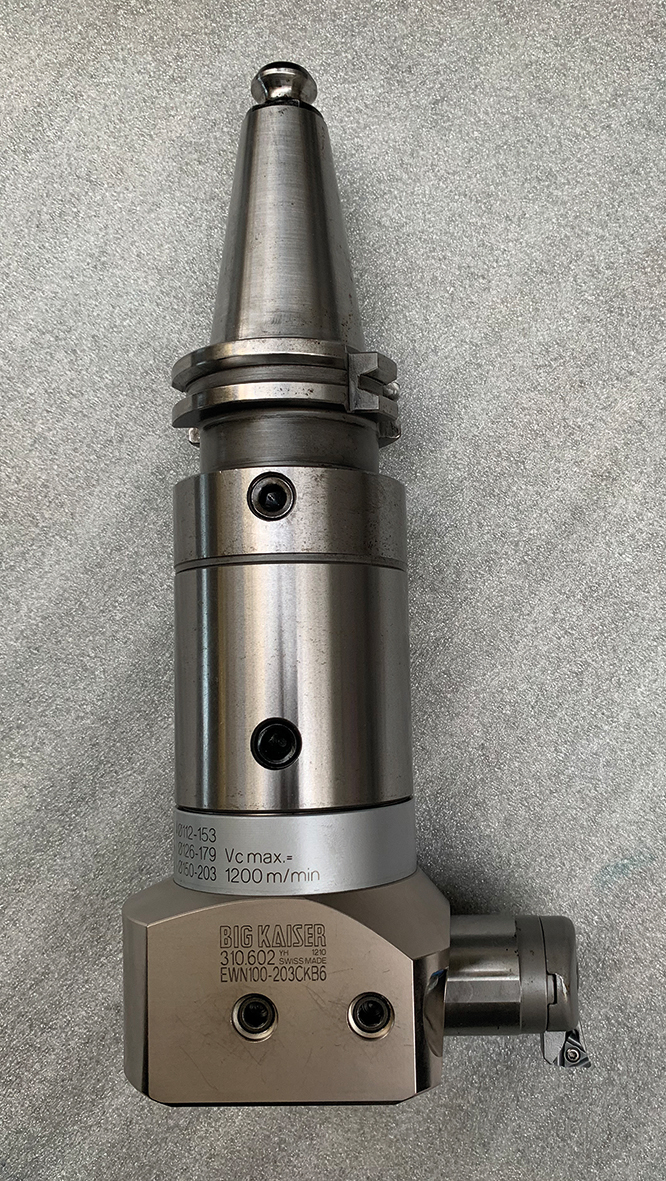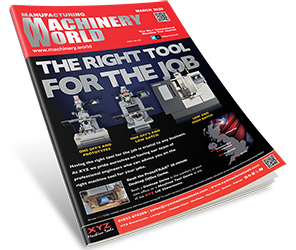The BIG KAISER fine boring technology that is available in the UK from Industrial Tooling Corporation (ITC), has been delivering impressive results for automotive manufacturers on the continent. Applying expert knowledge and combining this with digital technology and optimised indexable inserts, Schmauser Müller Metalltechnik has substantially increased process reliability and efficiency with its new fine boring processes. In the process, the company has increased tool life by a factor of three.
Schmauser Müller Metalltechnik, a Bavarian-based CNC manufacturing company that produces precision one-off and small series runs with its service portfolio rounded off by fixture construction, metal technology and associated CAD design.
“As a Bavarian company, we naturally serve automotive manufacturers, but to limit our industry exposure, we maintain a diverse customer base,” says Production Manager, Rainer Maurer.
The Digital Twin: state-of-the-art technology for a perfect process
“Our first encounter with the BIG KAISER project was the digital twin, which is a virtual model of a real-world process, object or system,” Maurer says. “It ensures that the user can be sure of success even before the actual process begins. Digital twins are particularly useful for one-off parts when there is no previous data available and the part must be made right the first time.”
SM Metalltechnik uses HSM Works CAM software from Autodesk, where a digital twin is created for all relevant components. In this case, the twin simulates the 5-axis C42 Hermle machine with HS-Flex automation and clamping devices from SMW Autoblok.
The tools are also digitally reproduced and with the BIG KAISER fine boring heads available from ITC, this includes the projection of adjustable lengths and diameters.
Once all the components are depicted, it is possible to simulate the best program sequence and a miscalculation in this area could result in a collision.
“A truly professional process must run reliably the first time, every time. We routinely run our parts through the simulation and have full confidence in the final results. This process ideally complements our modern machinery,” says Maurer. “Luckily, our Hermle machine was ‘digital twin ready’ – although we sometimes failed because we lacked precise complexity parameter data. This led to unpredictable results as each extension combination has a different digital twin. To overcome this, BIG KAISER provided us with the required data for all the relevant lengths and diameter combinations.”
Getting out of the indexable insert jungle
Digitisation was not the only factor that contributed to SM Metalltechnik’s growing success in the fine boring process. “Having used many different cutting materials in the past, we were not sure which inserts were best suited to a particular project,” recalls Maurer. “Our guesswork often resulted in inserts breaking and unsatisfactory results. Not surprisingly, employees became reluctant to take on fine boring work. This has all changed and today, we have a total of just 11 inserts at our facility, each for a clearly defined task and purpose.”
Hartl says: “I analyzed SM Metalltechnik’s requirements with Rainer Maurer in great detail. Based on the information, I was able to reduce the number of indexable inserts to 11, and still cover all the material and diameter combinations.” Maurer adds: “Our employees now have full confidence in the process. Our machines can run unhindered, dimensional accuracy is constant and surface quality is perfect. This improvement has enabled us to exploit the full potential of our machines.”
App for optimising cutting parameters
BIG KAISER has painstakingly optimised the cutting values for every diameter, every material and every projection length. The same applies to different spindle types. The BIG KAISER App makes the test results available to ITC customers, enabling them to fully concentrate on their core business.
Maurer says: “With our fine boring process, we enter the desired parameters in the app, such as bore diameter, material and projection length. The App then tells us which of our BIG KAISER tools is to be fitted with which insert, which extensions may be required and what cutting data is to be set. Then, we select the corresponding digital tool twin on the CAM workstation and program in the cutting values – that’s it. The operator no longer has to experiment with different values, but can rely on the results generated by the App, which simplifies the process enormously.”
Maurer continues: “The lifetime of our tools is now three times longer than before. More importantly, we replace inserts after a pre-defined period of use instead of waiting until something goes wrong.”
How does the concept work?
Every year, BIG KAISER invests heavily in the development and testing of new inserts, with a particular focus on fine boring. BIG KAISER has already patented important details, such as the optimised chip groove that improves swarf removal and thus surface quality of the finished bore.
The focus on fine boring differentiates BIG KAISER and ITC from its rivals. Other manufacturers produce a specific insert for a specific application, which works well for precisely that purpose, but performance deteriorates as soon as the given conditions are altered. For companies that produce small series runs or individual parts, this results in a large number of bores and materials. It forces them to use a hundred or more different indexable inserts to achieve the best possible results. The BIG KAISER concept avoids such scenarios. Instead of focusing on excessive specialisation to achieve marginally better results, BIG KAISER has created an all-rounder for delivering outstanding results in real-world manufacturing environments.
Well-positioned for the future
At SM Metalltechnik, these new fine boring processes have proven themselves a success. The company benefits from BIG KAISER’s know-how that has been developed and acquired over hundreds of hours of tedious work and puts it into practice every day on the shop floor.







